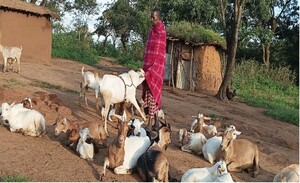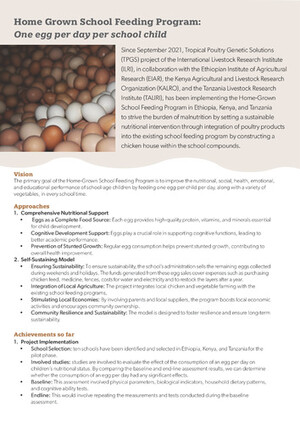
Optimization of alternative breeding schemes for the genetic improvement of common Tigray highland sheep in northern Ethiopia
Abstract
Genetic improvement is one of the major means to enhance the productivity of livestock, and well-designed animal genetic improvement schemes are necessary to achieve genetic gains. The objective of the current study was to design an alternative breeding program to improve the productivity of common Tigray highland sheep. Two village- and two central nucleus-based breeding schemes were simulated and evaluated in terms of genetic gain, bio-economic efficiency and operational feasibility.Four breeding schemes were simulated: scheme 1, a one-tier cooperative village-based breeding scheme, scheme 2, a two-tier cooperative village breeding scheme (dispersed village-based nuclei scheme), scheme 3, a central open nucleus-based scheme with 5% nucleus size; and scheme 4, a three-tier breeding schemes (central open nucleus-based linked with multiplier units). Simulation analyses were performed using the ZPLAN computer program, which is based on a deterministic approach to estimate genetic and economic gains in the breeding programs.Between the two village-based breeding schemes, scheme 2 showed higher genetic gain and economic efficiency in the breeding traits analysed than scheme 1. The central nuclei schemes were more efficient than the village breeding schemes. Scheme 3 was the most efficient with a genetic gain in the breeding objective of US $ 1.03 and a profit of US $ 2.73/ewe/year, but operationally it is also the most difficult to implement as it requires a big central nucleus. A central nucleus linked with the village-based nuclei would be a feasible option to overcome the operational difficulties of the conventional central nucleus schemes. If a village-based breeding program is considered it should be the first step in most low-input systems. In this case, scheme 2 is the most efficient.With some support from the public sector at the outset and a strong collaboration among the stakeholders including smallholders, scheme 4 could lead to substantial genetic gains in the common Tigray highland sheep breed within its habitat that covers large areas of the Tigray region. Therefore, we recommend a long-term breeding program which should include cross-breeding, genomic selection, updated estimates of genetic and economic values for the common Tigray highland sheep breed.
Citation
Haileselassie, K.W., Kebede, S.A., Letta, M.U. and GebreMichael, S.G. 2022. Optimization of alternative breeding schemes for the genetic improvement of common Tigray highland sheep in northern Ethiopia. Genetics Selection Evolution 54: 63.










